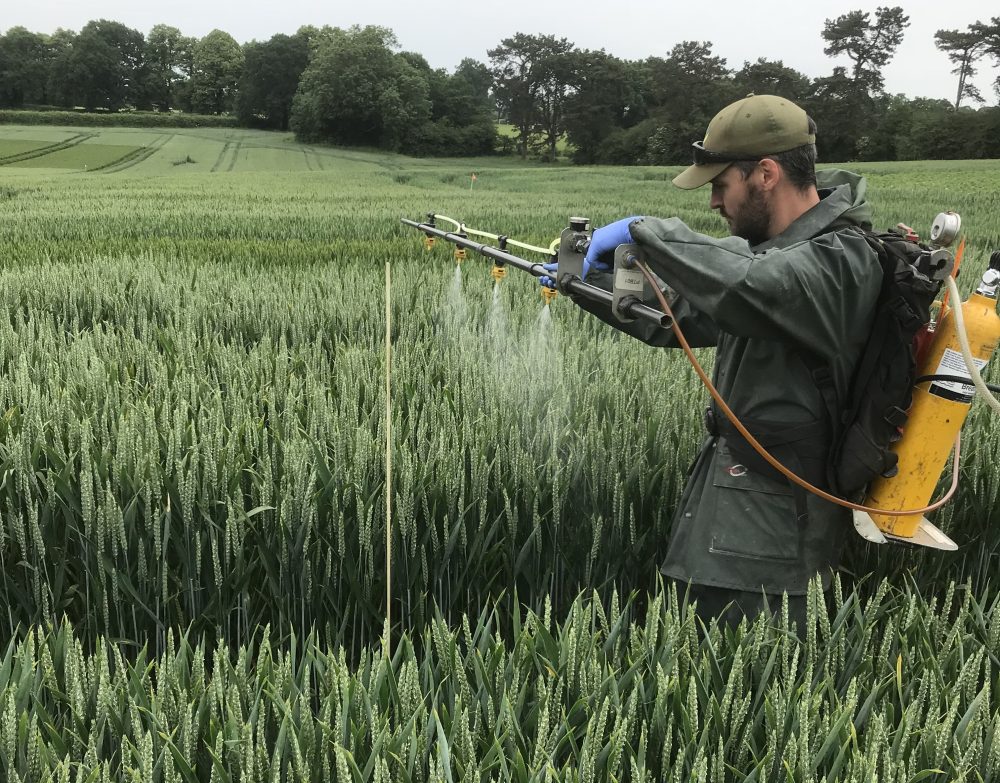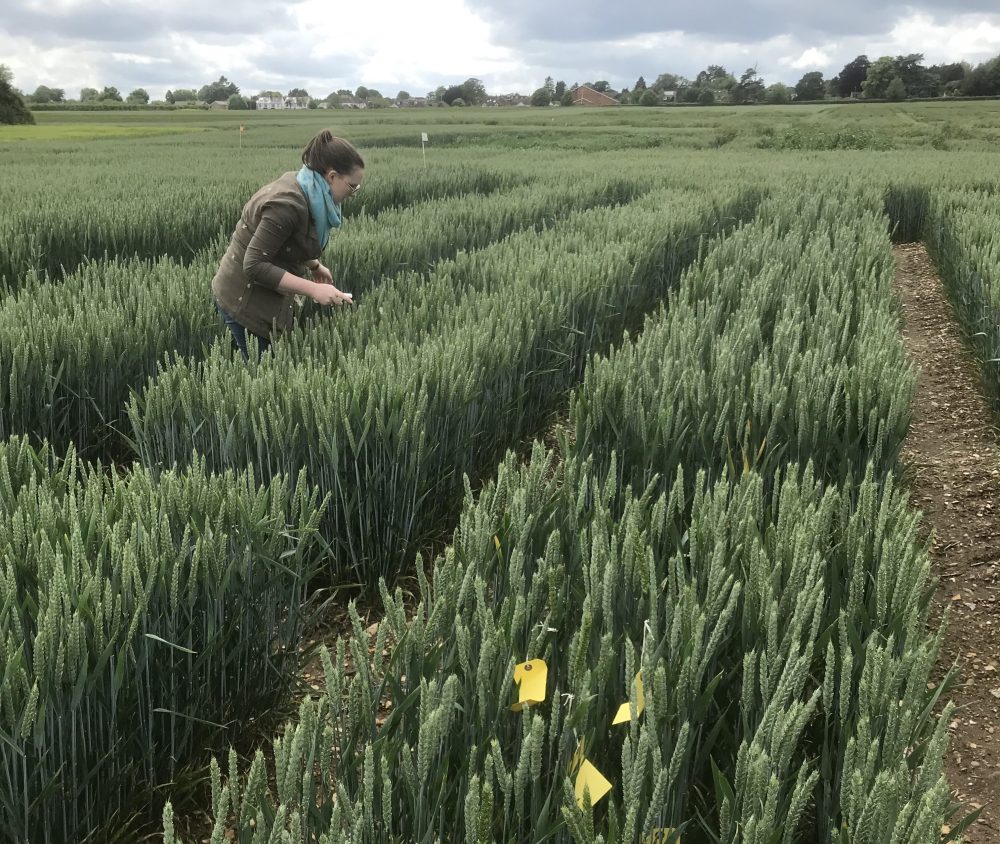Sugar signalling applications could boost wheat yields by up to 12%
Long term study confirms effectiveness of new technology
Enhancing wheat plants ’ sugar signalling ability could deliver increased yields of up to 12%, according to researchers from Rothamsted, Oxford University and the Rosalind Franklin Institute. That is an order of magnitude greater than annual yield increases currently being achieved through breeding.
The effect was achieved by applying a synthetic ‘pre-signalling molecule’ that releases trehalose-6-phosphate (T6P) in the plants. T6P is a signalling molecule that controls the plant equivalent of “blood sugar”. It is a major regulator of metabolism, growth and development including activating the pathway for the synthesis of starch, the world’s most significant food carbohydrate.

Wheat has complex genetics and targeting genetic bottlenecks in germplasm makes improvement through breeding far from straightforward. Instead, this chemical method for releasing T6P in response to sunlight acts as a direct switch for driving starch biosynthesis in grain, which forms the basis of wheat yields. This in turn this stimulates photosynthesis in the flag leaf, due to greater demand for carbon building blocks for grain filling.
The study also suggests that it may now even be possible to reduce fertiliser applications in the search for higher yields – this treatment with a pre-signalling molecule of T6P also activates genes for amino acid and protein synthesis in grain as well as the pathway for starch synthesis. Currently, new higher yielding wheat varieties suffer from dilution of protein content requiring increased fertiliser to maintain quality for bread making – by solving this problem and unlocking our dependence on fertiliser this treatment set a new path to more sustainable agriculture and with a reduction in the associated greenhouse gas emissions caused by fertiliser production.
Rothamsted and Oxford have created SugaROx, a spinout company, to deliver this research to farmers. Dr Cara Griffiths, lead author of the research paper, said, “It’s exciting to be able to take cutting edge technology from the bench to the field. Getting this kind of impact is often difficult to translate to the field, and this work demonstrated that novel crop inputs have huge promise to enhance yield and resilience in our cropping systems, something that is particularly important in a rapidly changing climate”.

“The path from discovery to translation has taken 25 years” says Rothamsted’s Dr Matthew Paul who led the research with Professor Ben Davis at the Franklin and Oxford University. “Such timeframes are not untypical in blue-skies plant research, but we do hope new technologies, such as AI and faster analytical techniques, can accelerate this process. We will need many more innovations like this to create sustainable and resilient agriculture in the coming decades. I am so grateful to my excellent people, co-workers and teams and for grants from UKRI-BBSRC which made this work possible. Getting this far has been hard work but extremely rewarding”.
“This work provides an excellent example of a case where direct selective manipulation of key molecular structures, rather than genetics or gene editing, inside a living system is a game changer. It has been really very inspiring to design and discover this new class of ‘drug for plants’ together”, Ben went on to add. At the Franklin, Ben leads the Molecular Perturbations Challenge, which aims to be able to use chemistry to engineer biology by modifying specific functional biomolecules in specific locations inside living organisms. This research could have additional real-world applications for human health in the creation of new diagnostics and therapeutics.
